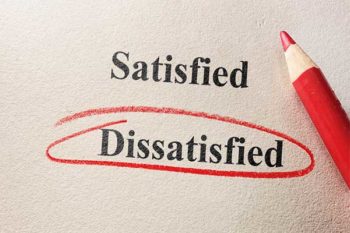
Customer Experience: Every Employee, Every Interaction, Every Day (Pt. 1)
Every business owner dreads it: getting an earful from a customer about a less-than-pleasant experience. As much as they want to say, “not at my company,” it happens. And when it does, it hits home—and all too often, it throws a punch at the company’s reputation and bottom-line. Customers have long memories and can make generalizations from isolated events and actions. A negative customer experience can result in a loss of trust, a decrease in sales revenue, and even disgruntled employees. It’s no wonder why a customer complaint is so dreaded.
But what if that dread is channeled into preventive action? Business owners can take those uncomfortable phone calls or emails from clients as an opportunity to be more attentive to the quality of their customers’ experiences with the firm—and better yet, keep them from happening in the first place. Hard-to-hear customer feedback usually reveals areas in need of attention and growth, and can provide the fuel that’s needed to—finally—take a strategic approach to creating positive customer experiences, every day. It can be a high value, high payoff initiative that’s too important to ignore.
In this first of a 3-part blog series outlining how to manage the customer experience, we’re going to explore a few unsavory customer experiences that are faced by business leaders across industries and business settings, and we’ll highlight the significance of taking actionable steps toward long-term solutions.
Common Challenges to Consider
These examples will put negative customer experiences into a real-life context and point to the need for some strategic customer experience re-tooling. They also demonstrate how much a company has to lose by not putting customer experiences up-front-and-center.
- Process Problems. A manufacturer of electrical products designed their order process to facilitate highly customized orders, which represent only half of their sales. As a result, they received complaints from major buyers related to their most straightforward (and even repeat) requests. These included long delays for simple price quotes and a need for sign off from three departments. To make matters worse for everyone involved, there was nothing the supplier’s salesperson could do to speed up the process. A great deal of time and energy was being wasted, creating frustration and customer dissatisfaction with what could have been—and should have been—an almost seamless process experience.
- Relationship Issues. A manufacturer of telecommunications equipment serving major global telecommunications firms received some new directions from a customer with whom they enjoyed a very positive, long-term relationship. The customer knew that they were bringing big changes to the table, different from what the supplier was expecting, so they brought several of their senior engineers into a meeting with the suppliers’ engineers to share the information and give them a chance to react and respond. That they did, through some very uncomfortable body language, making it clear to the customer they didn’t want to be there and didn’t agree with the directions they were being given. Afterwards, the relationship went downhill steadily, and the customer replaced the supplier with a firm that demonstrated more respect for their needs—and relationship.
- Performance Complications. A packaging supplier sat idle during a high-stakes situation. A customer was launching a new product—replacing an aging flagship product in their most profitable line of business—when a performance issue with their two suppliers surfaced: the packaging materials were reacting badly with the new chemistry of the product. The supplier in question responded at the senior level with, “Sorry, it looks like you have to go back to the drawing board,” while the other (competing) supplier sent in two engineers to investigate and devise a solution; they went on to be regarded as heroes. A customer was lost, thanks to a lack of commitment to creative problem-solving.
Embracing a Company-Wide Responsibility
In cases like these, decision-makers—the ones who hear those customer complaints first-hand—often default to the knee-jerk reaction of assembling their customer-facing people to address the reported problems and it’s back to business as usual, perhaps with a bit more sensitivity to customers’ needs. Yet, as the first example illustrates, the customer-facing person might experience the same level of frustration as the customer, whether or not their hands are tied by a dysfunctional process or red tape. And as the second and third examples show, there can be an almost collective (although invisible) effort to not put the customer first. In other words, employees may be working within a “system” that isn’t designed to respond with creative solutions.
Customer experiences are shaped by many diverse factors. To get the greatest mileage from a customer experience-boosting effort, it makes sense to involve employees from job functions that are typically not included in the “customer-facing” cluster, along with those who deal with customers as part of their daily routine. And when you do so, ensure that these employees understand their obligation is first and foremost to respect the relationship. More and more firms are realizing that their success depends on the legacy of customer experiences that are created by every employee, during every interaction, every day.
What About That Strategic Solution?
Delivering a great customer experience takes more than giving all employees a checklist for how to keep customers happy. There are three steps to transforming an organization into one that is successful in creating positive customer experiences and avoiding the negative ones. Our second post in the series will address the first step—focusing on the company culture.



